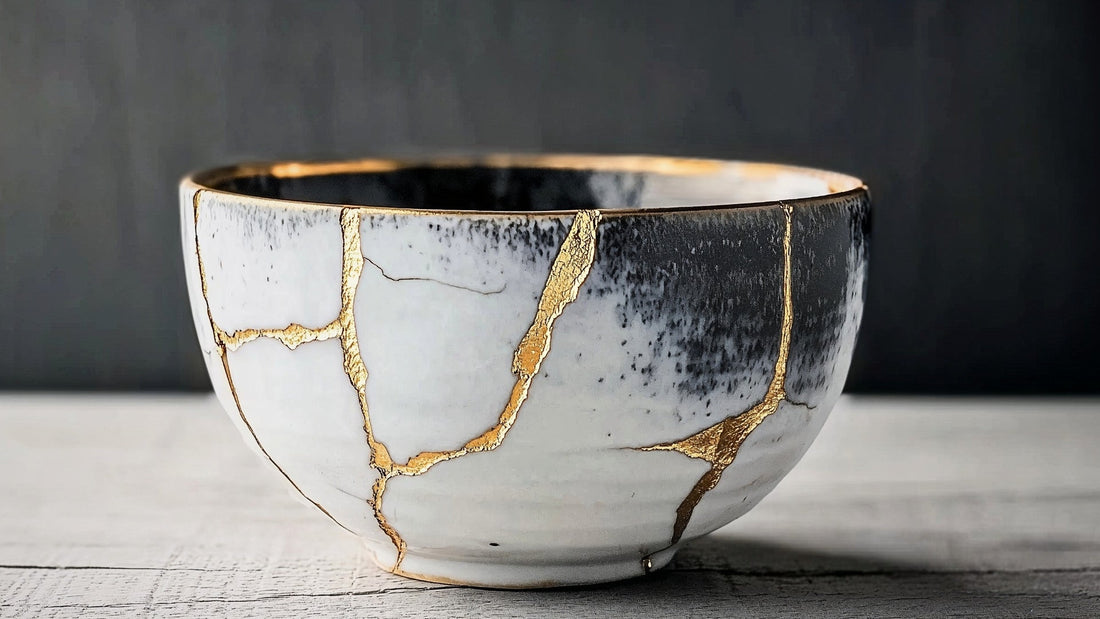
The Art of Kintsugi: How to Repair Broken Items and Embrace Imperfection
Introduction: The Beauty in Broken Things
Have you ever shattered a beloved mug or plate and felt a pang of regret as you swept the pieces into the trash? What if, instead of discarding it, you could turn that broken item into something even more beautiful than before? Enter Kintsugi—the centuries-old Japanese practice of repairing broken ceramics with lacquer and powdered gold.
More than just a method of restoration, Kintsugi is a philosophy that embraces wabi-sabi—the beauty of imperfection. It teaches us that cracks and flaws aren’t something to hide but something to highlight. In an age where everything is disposable, this art form feels more relevant than ever, encouraging sustainability, mindfulness, and creative transformation.
The Origins of Kintsugi
Kintsugi dates back to the late 15th century during Japan’s Muromachi period. Legend has it that Ashikaga Yoshimasa, a shogun of the time, broke his favorite tea bowl and sent it to China for repairs. When it returned, it was held together with unsightly metal staples—far from aesthetically pleasing. Unsatisfied, he sought out Japanese artisans to create a more elegant solution, and thus, Kintsugi was born.
The practice quickly evolved beyond a simple repair method and became an art form in its own right, embraced by tea masters and collectors who valued the philosophy behind it.
Why Kintsugi is More Than Just a Repair Method
At its core, Kintsugi is a reflection of life itself. We all experience challenges, heartbreak, and setbacks, but rather than concealing our scars, Kintsugi encourages us to embrace them and wear them like gold. It’s a powerful metaphor for resilience and transformation.
1. Wabi-Sabi: The Art of Imperfection
Kintsugi is deeply tied to the wabi-sabi aesthetic—finding beauty in imperfection, transience, and natural flaws. In a world that often seeks perfection, Kintsugi offers a refreshing reminder that beauty exists in the broken.
2. Sustainability and Mindfulness
Instead of throwing away damaged objects, Kintsugi allows us to repurpose and give new life to old items, reducing waste and fostering mindful craftsmanship. It’s an eco-friendly practice that aligns with the growing desire for sustainable living.
3. A Symbol of Strength and Growth
When we repair something with Kintsugi, it doesn’t just return to its original state—it becomes something new and more valuable. It’s a poignant analogy for our own personal growth: every hardship or setback can be turned into something golden.
How to Repair Broken Pottery with Kintsugi
Ready to try Kintsugi at home? While traditional Kintsugi uses lacquer made from tree sap (which can take weeks to cure), modern DIY methods offer an easier, faster alternative.
Materials You’ll Need
- Broken ceramic or porcelain item
- Epoxy resin (a strong adhesive for bonding)
- Gold powder (or metallic gold mica powder for a shimmering effect)
- A mixing stick or small brush
- A disposable mixing tray
- Sandpaper (optional for smoothing edges)
- Gloves and a mask (for safety, especially when working with resin)
Step-by-Step Guide to Kintsugi
-
Clean the Pieces: Ensure all broken edges are clean and dry. If the edges are sharp, you can sand them down slightly to prevent injuries.
-
Mix the Gold Powder with Epoxy: On your mixing tray, combine a small amount of epoxy resin with gold powder, stirring until you get a smooth, metallic mixture.
-
Apply the Mixture: Using a small brush or a toothpick, carefully apply the gold-infused resin along the broken edges.
-
Join the Pieces: Press the broken pieces together firmly, making sure the gold resin is visible along the cracks.
-
Let it Set: Allow the epoxy to cure for several hours (or overnight) before handling the piece.
-
Polish and Display: Once fully cured, you can gently buff the gold seams for extra shine. Your once-broken object is now a golden masterpiece!
Kintsugi in Everyday Life: More Than Just Ceramics
While Kintsugi is traditionally used for pottery, its philosophy extends far beyond that. Here’s how you can apply Kintsugi thinking to different areas of life:
1. Emotional Healing
Life leaves us with emotional cracks—failed relationships, disappointments, and setbacks. What if we viewed our emotional scars as golden seams, making us stronger and more unique? Kintsugi teaches us to accept our past and wear our experiences with pride.
2. Upcycling & Sustainable Art
Beyond pottery, Kintsugi can be used in home decor and upcycling projects. Try using gold-infused adhesives to mend furniture, glass, or even fabric. It’s a unique way to transform everyday objects into one-of-a-kind pieces.
3. Kintsugi-Inspired Fashion
Some designers have embraced Kintsugi as a fashion statement, incorporating cracked gold patterns into clothing, accessories, and even jewelry, symbolizing imperfection as elegance.
Conclusion: Celebrating Imperfection with Kintsugi
In a culture that often values perfection, Kintsugi reminds us that flaws are part of the story. Whether it’s a broken cup or a broken heart, embracing the cracks makes us stronger, more unique, and ultimately, more beautiful.
So next time something breaks, instead of tossing it away, consider repairing it with gold—both literally and metaphorically. The world doesn’t need more perfection; it needs more golden scars that tell stories of resilience, transformation, and beauty in imperfection.
